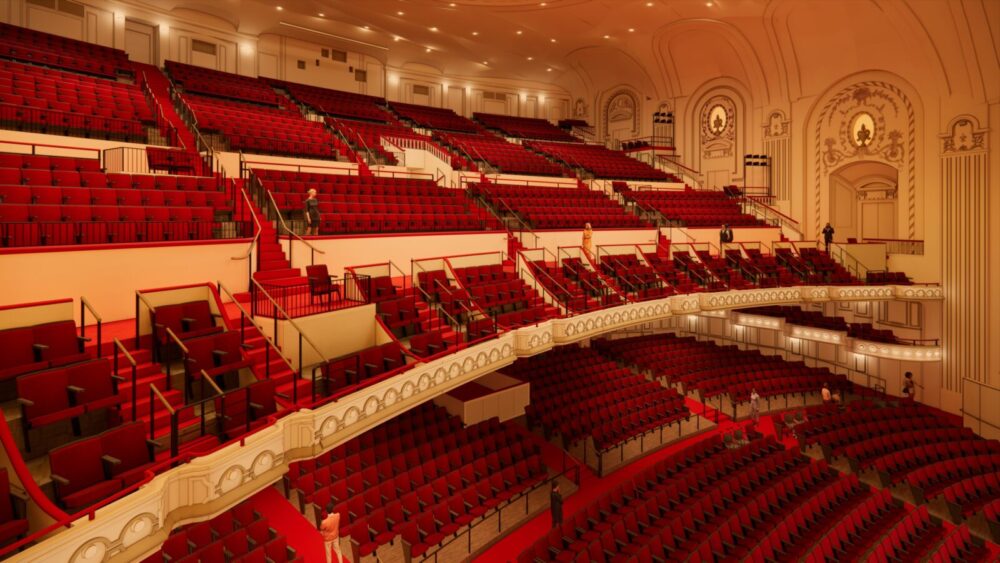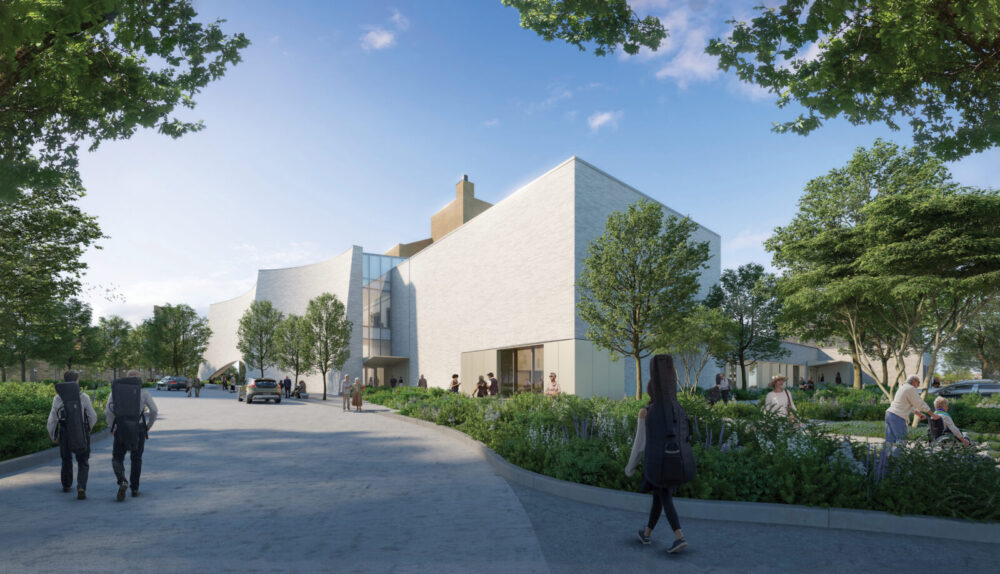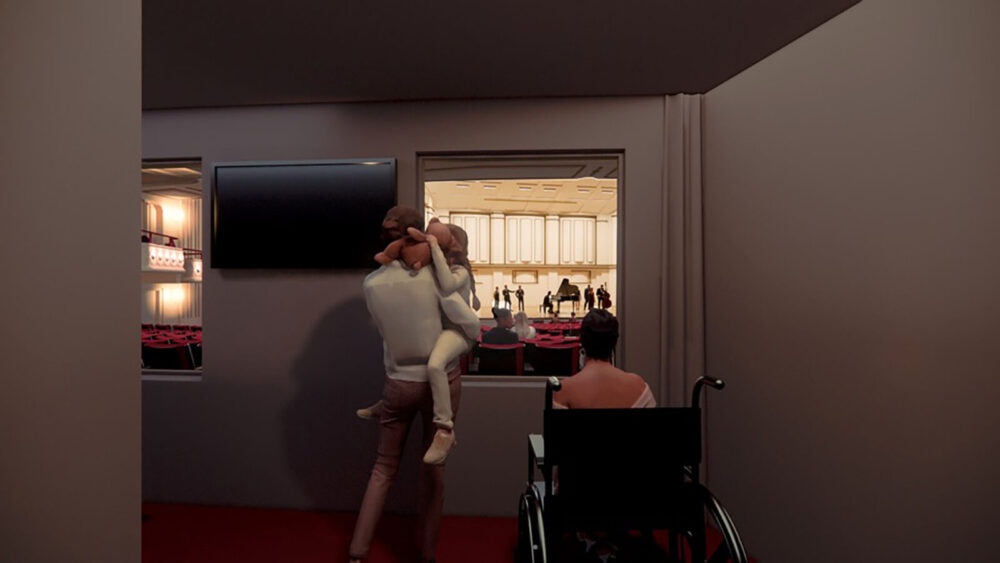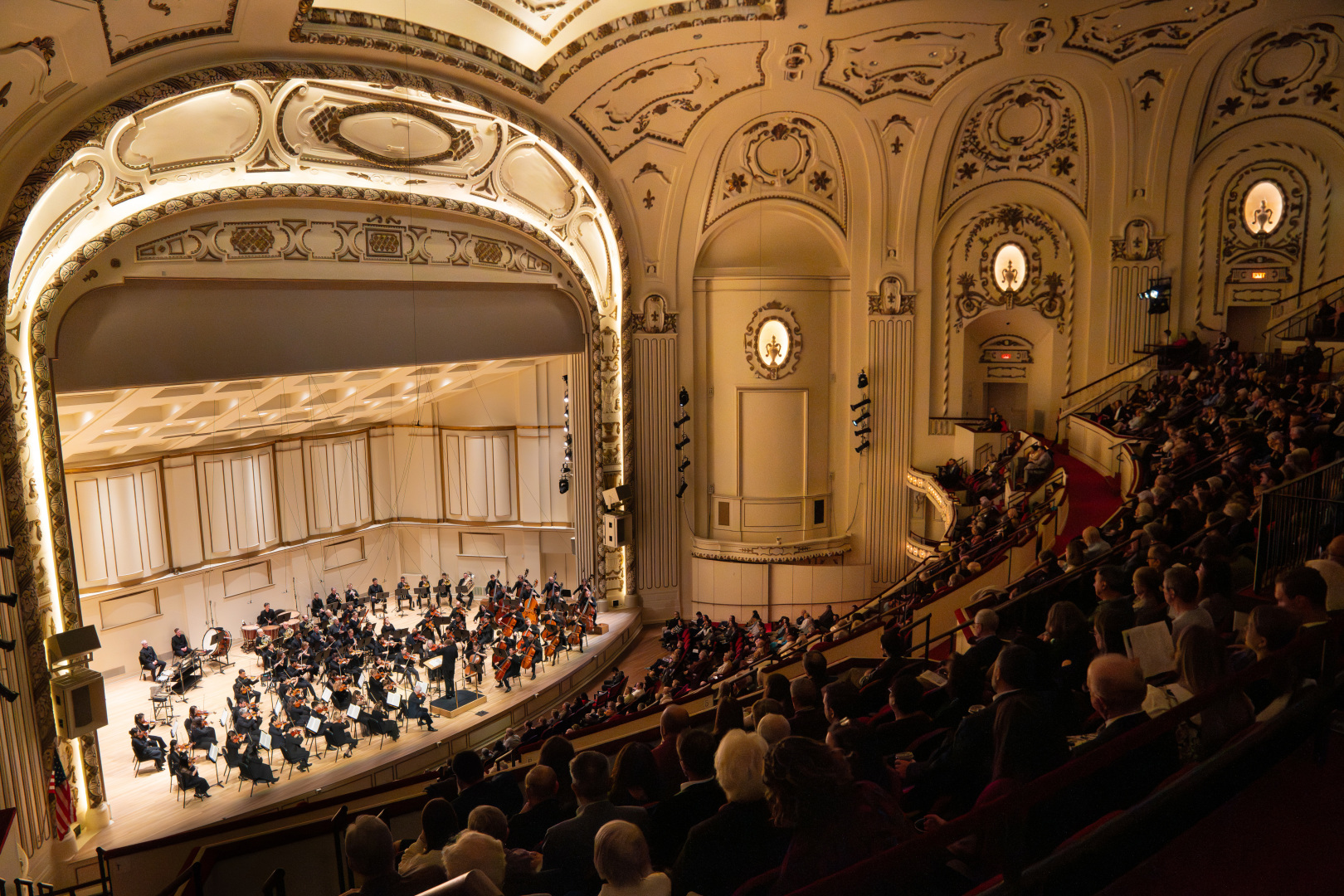Improving Accessibility Makes Powell Hall More Welcoming
By Eric Dundon
A trip to Powell Hall, the home of the St. Louis Symphony Orchestra, creates timeless memories. The opulent grand foyer, the ornate details of the concert hall, and the stunning music all contribute to extraordinary experiences for countless people.
But for those with accessibility needs, visiting Powell Hall since it became the SLSO’s home in 1968 wasn’t so straightforward. With uneven surfaces, limited seating options, and a lack of amenities for people with a range of needs, barriers made a trip to the venue difficult or impossible for some. The ongoing and transformational expansion and renovation of the nearly 100-year-old building addresses these issues and provides a more inclusive environment. In fact, improving the accessibility of Powell Hall and making it more welcoming to all is a strategic cornerstone of the project.

“When the SLSO made Powell Hall its permanent home in 1968, the building underwent a visionary transformation from a movie theater to one of the finest concert halls in the country,” said Marie-Hélène Bernard, SLSO President and CEO, referencing the building’s origins dating to the 1920s. “Our Board knew then that the institution would have to make additional investments to serve the needs of future audiences and artists. With the expansion and renovation of Powell Hall, we are poised to transform and improve the concert experience—creating greater access to live music, welcoming more people to our home, and serving the growth of our audience and educational programming.”
Architects Ryan Kopp and Gina Hilberry know deeply the challenges of bringing the 1920s-era venue up to today’s standards. They have guided efforts to modernize Powell Hall, addressing accessibility deficiencies and elevating the visitor experience through thoughtful, functional, and efficient architectural design.
Identifying the need
Some of Powell Hall’s accessibility shortcomings were in plain sight. On the Orchestra floor level, visitors using wheelchairs had to sit in the back of the hall due to a lack of accessible seating options. The knees of tall visitors struck the seats in front of them. The building lacked single-user restrooms for families and people with disabilities. The entrance on Delmar Blvd. faced stairs in every direction.

But some of the issues weren’t so obvious, specifically the absence of services and amenities to address a variety of needs. This is where Kopp—a project architect and associate principal at Christner Architects, the project’s architect of record—and his team came in. Beginning in December 2019, the Christner team attended a series of performances to study the building.
“We observed some of the holiday concerts to see how visitors truly used the building,” Kopp said. “We went to four different performances and made an analysis that focused on the user experience throughout Powell Hall.”
Gina Hilberry—a principal at St. Louis-based Cohen Hilberry Architects whose career has focused on inclusive design—collaborates with the Christner team on finding solutions to accessibility challenges.
Over many visits to Powell Hall, Kopp, Hilberry, and a team of experts observed every aspect of the building, from the seat map to the parking lot, gaining an understanding of how Powell Hall prevented some visitors from having the best experience or precluded them from attending at all.
All aspects of the visitor and artist experience
The forthcoming improvements to Powell Hall aren’t limited to maneuvering around the building. Hilberry noted that accessibility improvements encompass the entire visitor experience.
“The experience goes all the way from site arrival—because one of the consistent problems we found was just getting to the hall and parking—all the way to departure,” she said. “We looked at accessibility from outside the hall coming in.”

Parking and guest drop off will be vastly improved through a new patron drop-off zone and a reconfigured parking lot with a new east-facing entrance closer to vehicles. The lobby expansion includes two new passenger elevators and affords more space to add amenities that improve accessibility: more restrooms—including those for single users, and restrooms and concession areas on every level, greatly reducing the distance visitors will need to travel for services. The deepening of rows in sections of the balcony and added handrails will make the balcony more inclusive to seniors and people with neurological and sensory disabilities. And, of course, far more seating options on almost every level for visitors using wheelchairs, walkers, or other mobility assistance devices.
The improvements continue to the back of house, where artist and staff amenities were redesigned.
Hilberry notes that accessibility encompasses a wide array of needs, and the Powell Hall project addresses a broad definition.
“Designing for accessibility creates an environment that is inclusive for people with mobility assistance needs, who are older, people with sensory issues, people with language processing issues, cultural differences, gender differences, and more,” she said. “All of those overlap, and it’s got to work with safety requirements, too.”
Some of these improvements include access to telecoils for people hard of hearing; a “calm room” at the back of the auditorium for those who may need to take a break from a concert; Braille incorporated into signage for those with vision impairments; and other details that may go unnoticed to the average audience member.
Seamless design
For Kopp and Hilberry, part of the challenge in designing for Powell Hall was to minimize the overtness of accessibility improvements.
“Our goal is to completely integrate access into the design and make accommodations as invisible as possible,” Hilberry said. “The design stands strong and within that design there is as much inclusion as can be managed within the context of an existing, historic building.”
This was particularly challenging while integrating the design of the expansion alongside the existing building.
“We would spend a great deal of time figuring out slopes on a piece of floor that connects the existing and new buildings,” Hilberry gave as an example. “And most of Powell Hall is not flat, so that makes it more difficult than most in terms of projects of this scale and age.”
A new Powell Hall experience
As the project has progressed, the SLSO took advantage of opportunities to finesse the design further to make the experience even more welcoming. Once complete, the expanded and renovated Powell Hall will include numerous measures, both obvious and not, welcoming everyone to share in the experience of live music.
“The SLSO has really made accessibility a top priority,” Kopp said. “I think changes will be embedded in the way that the building, both new and old, will function. Hopefully it all feels very natural, and just becomes part of the fabric of Powell Hall.”
Eric Dundon is the SLSO’s Public Relations Director.


